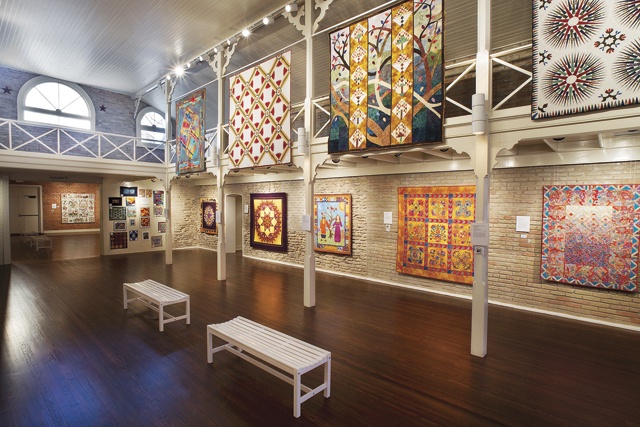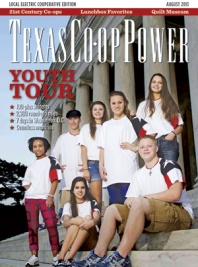In downtown La Grange, quilts are doing what quilts have always done.
They’re bringing people together.
But instead of women huddling for a quilting bee or gathering at a quilt guild, or children snuggling under a grandmother’s creation, visitors—quilters and nonquilters alike—come to the Texas Quilt Museum to view the common and uncommon artistry of handmade quilts from around the world.
The museum opened in November 2011 in adjacent 19th-century buildings that had been extensively renovated into three galleries totaling more than 10,000 square feet. Rotating displays are assembled every several months.
The nonprofit museum is the handiwork of two of Texas’ most prominent quilt promoters, cousins Karey Bresenhan and Nancy O’Bryant Puentes. In 1974, the duo started the International Quilt Festival, which is held each fall in Houston (October 31-November 3 this year) and has become what they say is the nation’s largest quilt event, drawing tens of thousands of visitors.
The museum, served by Fayette Electric Cooperative, displays traditional and contemporary styles made by quilters from around the world and from the private collection of hundreds of quilts owned by Bresenhan and Puentes’ company, Quilts, Inc.
“I’m just awed by the women who could do it. I do not have the patience. But I can appreciate it,” says visitor Debbie Lowe of Marion as she toured the museum’s “Flower Power” exhibit. Lowe is a member of Guadalupe Valley Electric Cooperative.
Among the extraordinary quilts on display: 10 white stitched pieces by Hazel Canny, a Houston artist known for her fine needlework. Some of the elaborate designs included examples of trapunto, which refers to how quilters fill in areas of the fabric with stuffing, creating a relief that gives shape to stems, leaves and other details. “Her stitching is so perfect it’s like it’s machined,” says visitor Elaine Tracy.
Nationwide, an estimated 21 million quilters spend roughly $3.6 billion annually on their pastime, according to the study Quilting in America 2010.
Bresenhan got her start quilting when her grandmother organized a quilting bee of eight relatives, including Bresenhan and Puentes, to make a quilt as a gift for her wedding in 1963. “Great-granny Karoline made the quilt top when I was born, and her daughter, my granny, kept it till I was ready to get married, which is when she called everybody together for a family quilting bee,” Bresenhan says. “And of course I still have it.”
She said that quilt remains the only one she has made. “I do not consider myself a quilter, because although I do quilt and love it and find it tremendously addictive, I do not have enough time to devote to making quilts,” Bresenhan says.
At the museum, 65 quilts were on display like paintings, with accompanying labels. Some dated to the 1800s and, as with many antique quilts, were made by “anonymous,” a stitcher lost to time.
In addition to the galleries and a store, the museum has expanded to a lot next door, where organizers have created a vintage garden with a pergola framed by a mural on the long exterior brick wall painted in a quilt design by Brent McCarthy of New Braunfels. The museum also is developing a library and material culture center in a back room as a resource for quilt scholars.
The museum exhibit, “America the Beautiful,” showcasing patriotic quilts, continues through the end of September.
——————–
Charles Boisseau is an Austin writer and frequent contributor to Texas Co-op Power.


